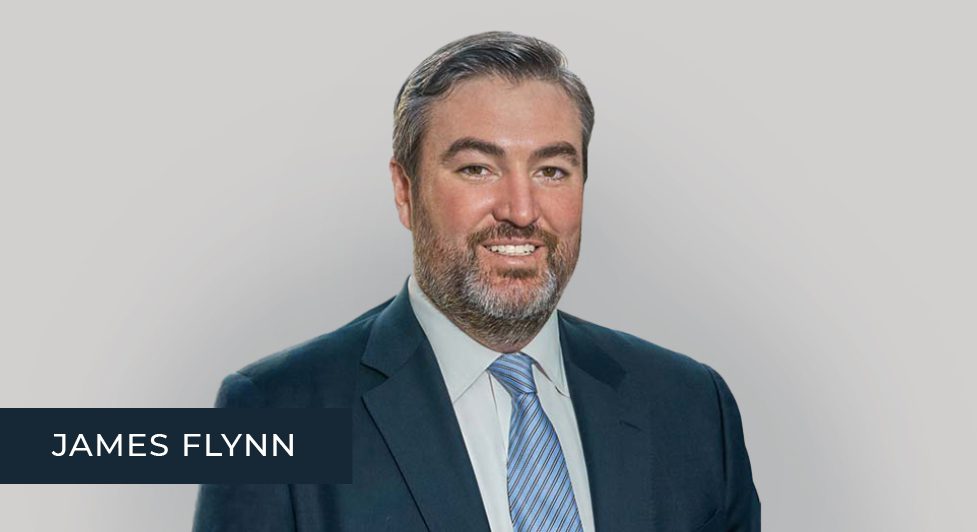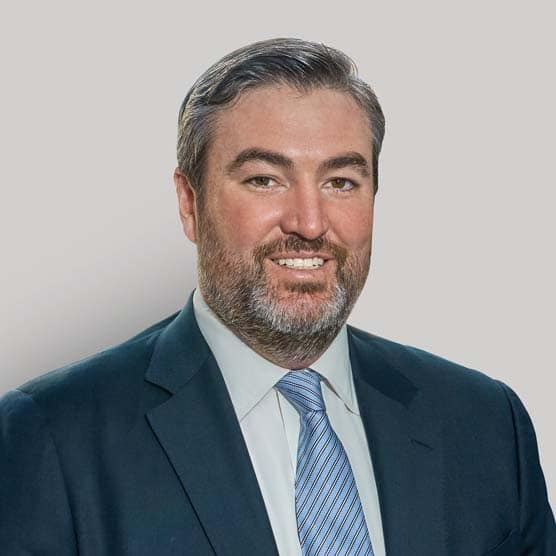With the recent change of administration and the start of a new calendar year, the time seemed right for Lument to host the latest in our series of multifamily webcasts. The multifamily market had been showing definite signs of emerging from the doldrums, and the incoming Trump administration was sure to introduce economic and housing policies that would depart from its predecessor’s. A look forward was in order.
Two days after the inauguration, economist Ken Rosen and multifamily owner-operator Roger Cagann joined us for The New Multifamily Playbook: Adapting to Policy and Market Shifts. Ken is chairman of Rosen Consulting Group, a real estate market research firm, chair of the Fisher Center for Real Estate and Urban Economics at the University of California, Berkeley, and professor emeritus at its Haas School of Business. Roger is the co-chief executive officer at Axiom Properties, which owns and manages 6,200 Class B units within 250 miles of Chicago. He has been in the multifamily business for almost 40 years. Together, we examined the prospects for multifamily in 2025.
The Big Question: The Future of the 10-Year Treasury
By far, the largest quandary facing multifamily investors is the trajectory of the 10-year treasury. When the Federal Reserve began lowering the overnight rate in September 2024, the hope was that the long-term rate would follow suit, but that has not been the case. While the overnight rate is now 100 bps lower, the 10-year headed in the opposite direction, rising from 3.69% on the day of the first rate cut and reaching a high of 4.80% a week before the webcast.
When we asked our audience where they thought the 10-year would be in 12 months, 49% predicted it would be in the 4.00% to 4.50% range, while 33% forecast it would fall between 4.50% and 5.00%. Ken was more pessimistic, however. “Although the audience poll reflects the larger consensus, we think many of the policies of the current administration, if implemented, will be inflationary,” he said. “As a result, we estimate that the long-term bond will rise over the year to 5.50%.”
Among other evidence, Ken cited Trump administration plans to renew and expand the 2017 tax provisions, which he said could push the deficit to $2.5 trillion. He also noted that plans to deport undocumented immigrants—or encourage them to leave voluntarily—could raise labor prices, especially in construction. In addition, he asserted that tariffs would lead to higher prices. “If you sum these all together, inflation will be a point higher at 3.5%, and the 10-year bond will float upward,” he concluded. “That means cap rates will be higher, and borrowing costs, already an issue, will be 0.5% to 0.75% higher in 12 months than they are now.”
While Roger was more optimistic about the 10-year treasury, he did note that decreasing the rental pool by 1 million or 2 million people could lead to declines in occupancy. While Axiom rigorously screens tenants, other owners might not be as strict. “If some of my competitors start adjusting rents or offering concessions, they might attract some of my tenants,” he said. “I think, overall, it will be a negative if we lose population through deportation. We are taking a wait-and-see stance.”
A Tale of Two Markets
The panelists also took a look at the supply overhang that has halted or reversed rent growth in such Sunbelt markets as Austin, Phoenix, Atlanta, and Dallas. Although construction starts declined last year, Ken believes underlying supply issues will take until the middle of 2026 and, in some cases, 2027 to resolve, at which point rent growth will revive. “The good news,” he said, “is that demand has been pretty consistent and that construction starts are down significantly, but new supply does not turn off quickly.” For the moment, Ken sees more opportunity in older markets, most of them coastal, like New York City, Washington, D.C., and Chicago, where post-pandemic construction was muted and rent growth has been strong.
Roger noted that Axiom’s emphasis on Class B properties has, to a large degree, insulated it from the effects of new supply, which has consisted primarily of high-end Class A buildings. “We like Class B housing because when times are tight and people in Class A housing want to save money, they drop down to Class B,” he said. “Similarly, when times are good, many people in Class C apartments stretch up to Class B.” Roger’s theory is supported by facts. Occupancy in Axiom’s portfolio ranges in the 96% to 97% range year in and year out.
Roger also views the addition of Class A properties to the rental stock as a plus for his business. “Given the economics of new construction, it makes sense for market-rate builders to concentrate on Class A projects,” he said. “But as more Class A is being built, 20-year-old Class A is pushed down to Class B, and that creates opportunity for us.”
Both Ken and Roger agreed that more housing, regardless of Class, is the answer to the affordability crisis. Ken pointed out that rent growth has outpaced renters’ income growth and is hopeful that, considering President Trump’s history as a developer, the current administration will take steps to increase the supply of middle-income and workforce housing. A promising approach, he said, would be to expand the Opportunity Zone program, which provides tax incentives for investors who place new capital in businesses operating within designated distressed areas.
Roger pointed out that there is a limit, however, to what the federal government can do, as state and local governments have the most impact on whether multifamily housing gets built. Ken agreed and pointed to new laws in California that make it easier for developers to receive approval on the local level and that encourage affordable housing.
Exploding Insurance Premiums
When our panelists looked at the expense side of the multifamily equation, they both singled out insurance as the issue most likely to jeopardize an owner’s bottom line. Roger noted that while the Midwest is subject to such extreme weather as wind and hail, Axiom’s insurance costs are lower than its peers in the Sunbelt and the coasts that are exposed to hurricanes and fire. Nonetheless, keeping up with premium hikes is challenging for Axiom. “We have been able to keep expense growth lower than income growth except for insurance and taxes,” he said. “To keep insurance costs under control, we are taking higher deductibles and shopping policies harder.” Self-insurance, Ken added, is another option, but it makes sense primarily for large investors.
Addressing the insurance crisis is complicated, and Roger and Ken had only hypothetical solutions to offer. One possibility, Ken said, would be for more states to create plans similar to those in Florida and California, although these policies are hardly comprehensive and typically funding is insufficient relative to need. There might also be action at the federal level. “I would think the insurance crisis would be a priority for this administration,” Ken said. “Although Republicans would likely prefer a private sector response, they might take action.” Roger took a more practical point of view. He observed that there may be innovations in materials—such as roofs impervious to fire or hail—that could mitigate premium increases going forward.
Slow Progress Forecast as the Year Unfolds
Looking forward, I joined Ken and Roger in seeing 2025 as a year that, in Roger’s words, will be “incrementally better.” “I think we will see an unlocking of the markets,” Ken said, “not a boom, but increased market activity and an acceptance of where rates are.” He feels owners watching cap rates rise will capitulate as will those facing refinancing at much higher rates. “There are opportunistic investors looking to the Sunbelt and seeing the possibility of buying a property at 20% below replacement cost,” he said. “That is pretty attractive.”
Roger is one of those opportunistic investors, although he will be focusing his search on the Midwest. “We will even stretch beyond our radius from Chicago if we can find a value-add property at a price that will meet our requirements,” he said. “A property is attractive to us if we think we can achieve a margin of 20% to 30% after stabilization. Overall, Ken sees transaction volume rising 20% to 30% over the year.
The competition for these properties will be stiff. When we polled our audience, 43% said they would be net buyers, while only 7% said they would be net sellers. I was happy to see a slight improvement from our September 2024 webcast, when 35% of the audience identified as net buyers and 9% as net sellers.
Ken sees capital coming off the sidelines to support these transactions and joining the increasingly active government-sponsored enterprises (GSEs). But with the Republicans returning to power, Ken said he would not be surprised if there was an effort to take the GSEs out of conservatorship. “I think there is less than a 50% chance of this happening, but if it does, it’s possible that the cost of financing would be 25 bps to 50 bps higher because of the implicit government subsidy in the system,” he said. “Given that the current spread is about 100 bps higher than it usually is, however, this could be a wash.”
In our final analysis, Ken, Roger, and I were all guardedly optimistic about the future of multifamily. I do see the frost coming off the market, and more buyers and sellers coming together to raise transaction volume over the course of the year. How fast this progress unfolds remains to be seen.
Click here to watch the full webcast recording.

